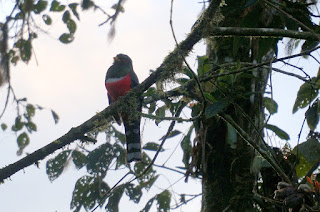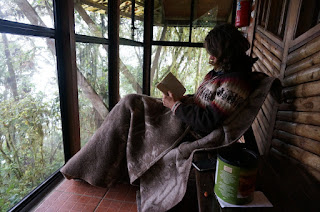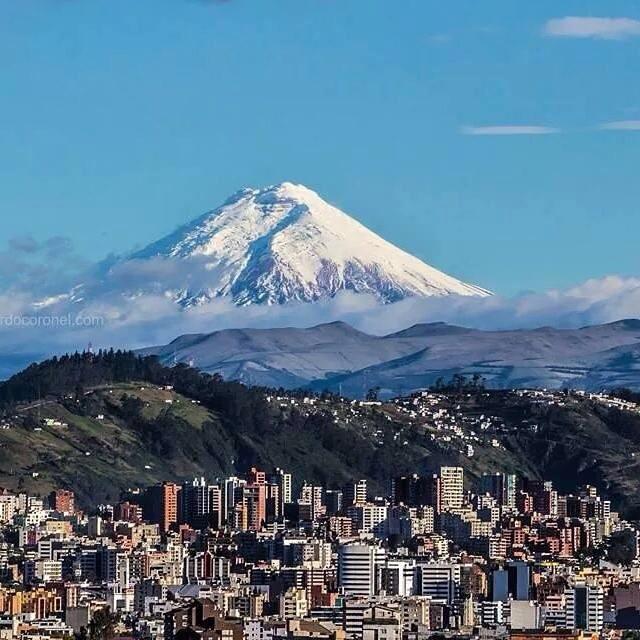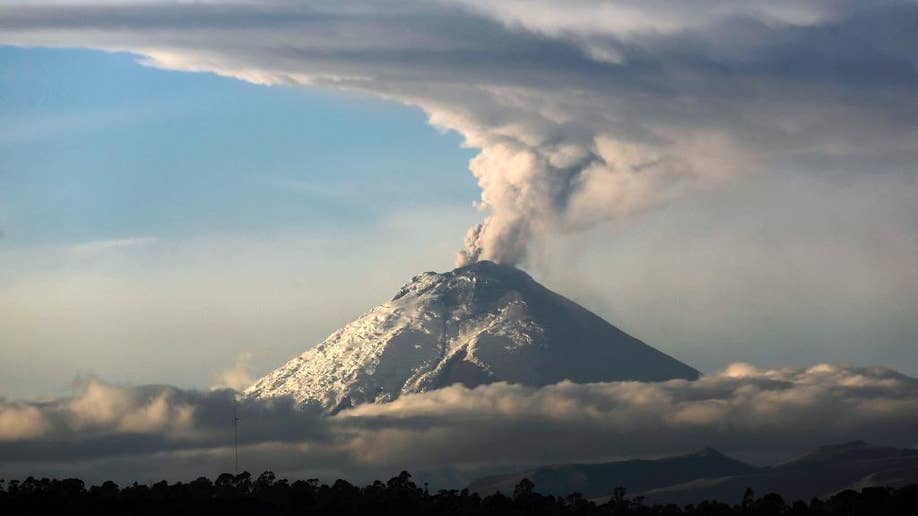Thursday,
February 14 - Saturday, February 16, 2019
Yes, we are still alive! For the last 3 days we have been at an eco-lodge in the Andes Mountains, with NO internet whatsoever. So this will be a 3 in 1 blog for the last few days.
We were picked up at 6:30 am on Thursday for a 3 day stay at Bellavista Cloud Forest Reserve. It was a 2 hour drive west of Quito (50 km).

We were picked up at 6:30 am on Thursday for a 3 day stay at Bellavista Cloud Forest Reserve. It was a 2 hour drive west of Quito (50 km).

imagecredit:https://galapagos2009.wordpress.com/day-by-day-activities/quito-adventures/bellavista-cloud-forest-reserve/
Bellavista
Cloud Forest Reserve is a 2000 acre private conservation area located
on a high ridgeline above the Tandayapa Valley, on the western slope
of the Andes Mountains. It ranges from 5000 – 8000 feet (1550 –
2500 m) high in elevation.
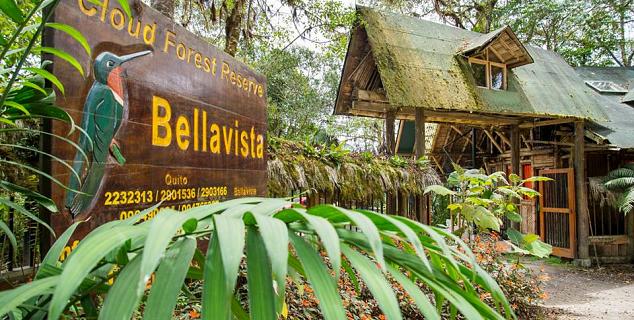

imagecredit:https://www.jasmineholidays.co.uk/hotels/bellavista-cloud-forest-reserve
Bellavista
was established in 1991 (from a formerly deforested area) by Richard
and Gloria, who both have extensive experience in ecotourism.
Richard was a Galapagos naturalist guide, and Gloria helped write the
first Columbian tourism guidebook to Ecuador. From the owners:
Conservation
is forever, and that is our goal. The project (for that is what
Bellavista is!) is central to our lives and a source of deep
satisfaction.
Our
room was called the Alemana Suite. It was rustic.
Bellavista
has 20 trails ranging in difficulty, and offers 3 guided hikes a day
(6:30 am, 9:30 am, and 3:00 pm). Guides take a maximum of 8 hikers.
You are also welcome to hike on your own with a provided map.
There are over 330 species of birds here. In fact, in the Audobon
Bird Counts, this area has listed the highest number of species seen
in one day, since 2006. There were some VERY serious bird watchers here at this eco-lodge, but we really didn't have a clue.
The
cloud forest birds are most active right after a rain, when the
insects are most prolific.
Bellavista has a nice area to watch the
hummingbirds. They get between 8-14 species of hummingbirds
at their feeders everyday.
We were even able to get the hummingbirds to land on our fingers!
One of the iconic features of the cloud forests are the epiphytes, which can be seen everywhere growing on the different trees. An epiphyte is a non-parasitic plant that grows on another plant. This would include ferns, bromeliads, air plants, and orchids. In fact, one out of every 4 plants here is an orchid.
One of the iconic features of the cloud forests are the epiphytes, which can be seen everywhere growing on the different trees. An epiphyte is a non-parasitic plant that grows on another plant. This would include ferns, bromeliads, air plants, and orchids. In fact, one out of every 4 plants here is an orchid.
Bellavista
is located on the Equator, which means flowers are in bloom all year
long.
The
area has 219 species of reptiles, 130 species of amphibians, and 270
species of mammals.
Some
of the mammals at Bellavista include mountain lions; the endangered
Spectacled Bear which is South America's only bear (they have
yellowish-white rings around their eyes); the Andean Coati (a long,
pointy-nosed raccoon); Kinkajoo (also called “honey bear”);
Tayra (giant weasel); and the Olinguito (from the raccoon family).
The Olinguito is a brand new species, discovered in 2013. The name
means fog or mist, after the rainforest area in which it lives.
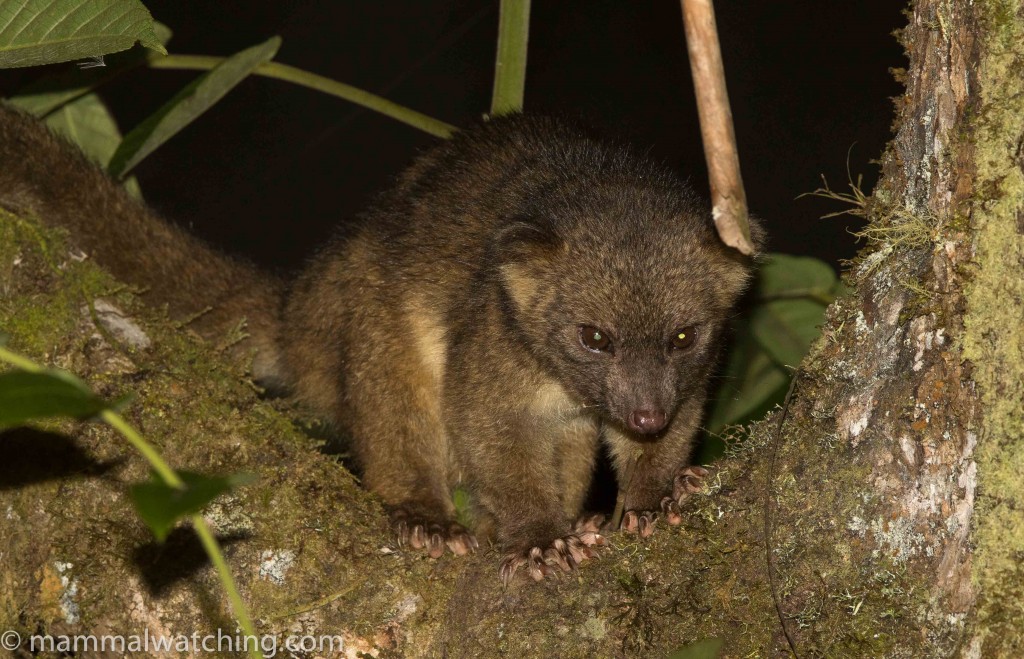

imagecredit:https://www.mammalwatching.com/2015/09/11/new-trip-report-bellavista-ecuador/
The Olinguito is a night creature, so every evening the lodge put out a bunch of bananas in the hopes of attracting it, but we never saw him. Instead, every morning we saw the Tayra Weasel coming to steal the bananas that the Olinguito had snubbed.
We even saw squirrels making off with bananas bigger than they were!
On the first day, the morning hike was nice. Our guide Juan Carlos had eagle eyes and could spot every single interesting plant, flower, or animal around.
In the afternoon, it poured rain. Juan Carlos suggested skipping the afternoon hike, so this is what we did instead (yes, it was chilly):
Instead, he took us on a night hike after dinner, in the dark. The rain had stopped and this turned out to be one of our favourite hikes. We saw tons of critters that you don't find during the day:
The rest of our stay turned out very nice, we were lucky indeed to not get any more rain, and we went on lots more interesting hikes, lasting about 3 hours each. The trails wound up and down the mountain, we sure got some good exercise!
Bellavista gave us a free transfer back to the JW Marriott, where Celebrity is giving us a free transfer back to the airport later tonight for our 1 am flight, ugh. We have to fly Quito to Miami at 1 am, then Miami to Toronto at 5:30 am. We will be walking zombies by the time we land.
In the meantime, since we have several hours to kill, the Marriott has been kind enough to give us free access to their gym and spa, so we are going to take advantage of that.
This will be the last blog until our next travels, we hope you have enjoyed Ecuador!
We even saw squirrels making off with bananas bigger than they were!
On the first day, the morning hike was nice. Our guide Juan Carlos had eagle eyes and could spot every single interesting plant, flower, or animal around.
In the afternoon, it poured rain. Juan Carlos suggested skipping the afternoon hike, so this is what we did instead (yes, it was chilly):
Instead, he took us on a night hike after dinner, in the dark. The rain had stopped and this turned out to be one of our favourite hikes. We saw tons of critters that you don't find during the day:
The rest of our stay turned out very nice, we were lucky indeed to not get any more rain, and we went on lots more interesting hikes, lasting about 3 hours each. The trails wound up and down the mountain, we sure got some good exercise!
Bellavista gave us a free transfer back to the JW Marriott, where Celebrity is giving us a free transfer back to the airport later tonight for our 1 am flight, ugh. We have to fly Quito to Miami at 1 am, then Miami to Toronto at 5:30 am. We will be walking zombies by the time we land.
In the meantime, since we have several hours to kill, the Marriott has been kind enough to give us free access to their gym and spa, so we are going to take advantage of that.
This will be the last blog until our next travels, we hope you have enjoyed Ecuador!




